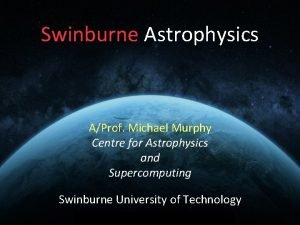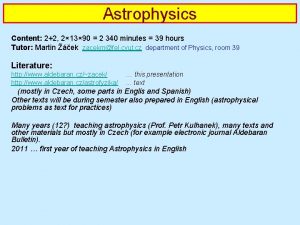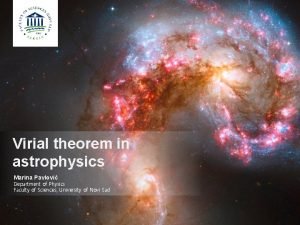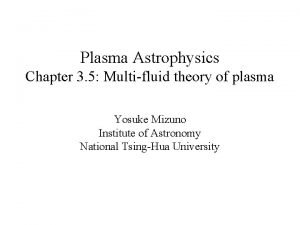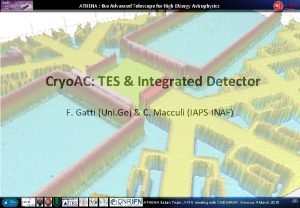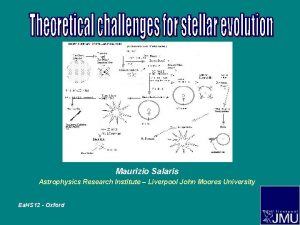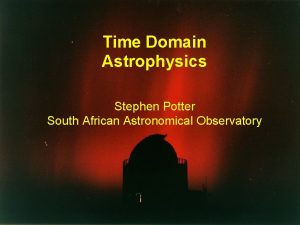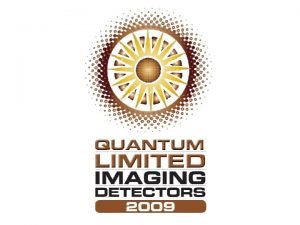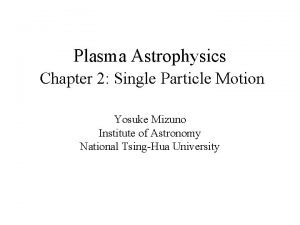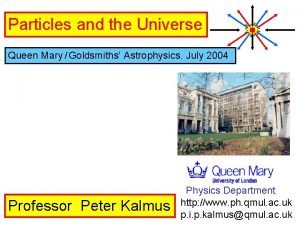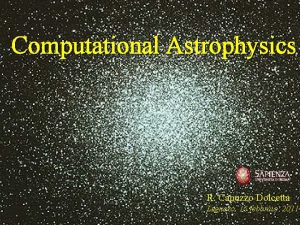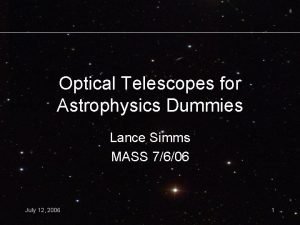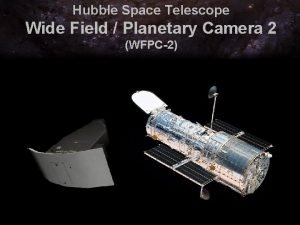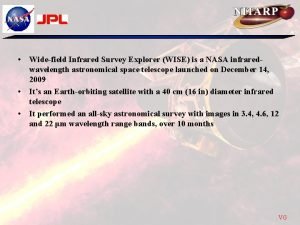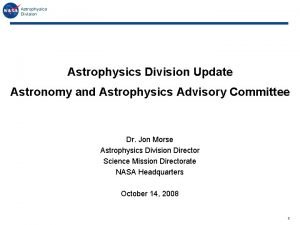AMEGO A Wide Field Astrophysics Discovery Mission for


















- Slides: 18

AMEGO – A Wide Field Astrophysics Discovery Mission for the Me. V Band Active Diffuse Galactic galactic lines Nuclei Pulsars Julie Mc. Enery (NASA/GSFC) on behalf of the AMEGO team. Gamma-ray Bursts Sun Dark Matter Black Hole Binaries Novae 1

AMEGO Collaboration • NASA/GSFC, George Wash. Univ. , Clemson Univ. , Naval Research Lab, UC Berkeley, Wash. Univ. , University of New Hampshire, NASA/MSFC, University of Alabama, Huntsville, USRA, the Ohio State University, UIUC, UNLV, LANL, University of Delaware, UC Santa Cruz, SLAC, Argonne, Stanford University, University of North Florida, Yale University, Rice University, INFN, Pisa University, Padova University, INAF, Udine University, Rome University, Yale University, University of Maryland https: //asd. gsfc. nasa. gov/amego


AMEGO Science Understanding Extreme Environments Active Galactic Nuclei Astrophysical Jets Understand the formation, evolution, and acceleration mechanisms in astrophysical jets Pulsars Compact Objects Identify the physical processes in the extreme conditions around compact objects Sun Dark Matter Test models that predict dark matter signals in the Me. V band Me. V Spectroscopy Measure the properties of element formation in dynamic systems Dark Matter Gamma-ray Bursts Diffuse galactic lines Supernova Remnants Black Hole Binaries Novae Large Magellanic Cloud

Relativistic jets and compact objects AMEGO and GRB • 440 long GRB/year (determined using method of Lien et al 2014) – 19. 2/year with z>6 – All with localization • Polarization! - 20% MDP for brightest 1% of AMEGO GRB – AMEGO observations will probe the GRB emission mechanism and jet composition • ~80 short GRB/year (by scaling short/long ratio from GBM) – Important implications for gravitational wave counterpart searches 5

GRB 170817 A GRB 170817 is the EM counterpart to GW 170817 at 43 Mpc With AMEGO: • Detectable out to 130 Mpc • <6 deg localization (with very preliminary analysis • ~20% probability being within the Fo. V See talk by J. Racusin, Wed 1: 30 -4: 30 splinter session 6

Me. V Blazars • Among the most powerful persistent sources in the Universe • Large jet power, easily larger than accretion luminosity • Host massive black holes, near 109 solar masses or more • Detected up to high redshift • Evolution of Me. V blazars is stronger than any other source class – i. e. maximum density might be very early on – AMEGO will detect >500 Me. V blazars – ~100 at z>3 7

Relativistic Jets in AGN • Do AGN jets accelerate protons to extremely high energies? Hadronic blazar flaring model – Producing Pe. V neutrinos, UHECR and high energy gamma-rays – Simultaneous observations of optical and Me. V flux and polarization during blazar flares can test hadronic acceleration models Quiescent: Hard X-rays/soft gammas: secondaries from pion production and proton synchrotron 8

Multimessenger Astrophysics • GRB and GW sources: AMEGO will detect ~80 s. GRB/year with ~degree localization significantly more than any currently operating GRB detector • Do AGN jets accelerate protons to extremely high energies? – Producing Pe. V neutrinos, UHECR and high energy gamma-rays – Me. V range is crucial 9

Me. V Pulsars Kuiper and Hermsen 2015 • Pulsars seen in hard X-ray but not by Fermi-LAT, peak lies in Me. V band • 11 Me. V pulsars known – Extremely energetic Edot > 1036 erg • Possible “hidden” population of energetic soft gamma emitting pulsars • Emission might probe different part of the magnetosphere than Ge. V Me. V Pulsar Puzzles: Who do most have single peaked lightcurves? Why most are radio quiet? where do their SEDs peak and why ? 10

Dark matter Searches • Unique sensitivity to the 511 -ke. V line – Sensitivity to many classical positron sources: can constrain the contribution from nearby pulsars • The Me. V region is where the bulk of photons from WIMPs below 100 Ge. V is expected • Axions, ALPs: – Sensitivity to photons emitted by SNe (Meyer et al. 2016) – Sensitivity to photon/ALP oscillations (Roncadelli et al. 2011; Hooper et al. 2009 11

Gamma-ray Spectroscopy Nuclear lines explore Galactic chemical evolution and sites of explosive element synthesis (SNe) • Electron-positron annihilation radiation – e+ + e- -> 2 g (0. 511 Me. V) • Nucleosynthesis – Giants, CCSNe (26 Al) – Supernovae (56 Ni, 57 Ni, 44 Ti) – ISM (26 Al, 60 Fe) • Cosmic-ray induced lines – Sun – ISM 56 Ni: 158 ke. V 812 ke. V (6 d) 56 Co: 847 ke. V, 1238 ke. V (77 d) 57 Co: 122 ke. V (270 d) 44 Ti: 1. 157 Me. V (78 yr) 26 Al: 1. 809 Me. V (0. 7 Myr) 60 Fe: 1. 173, 1. 332 Me. V (2. 6 Myr) 12

Thermonuclear Supernovae (SNIa) • 77% of energy escapes in gammarays, observed for SN 2014 J • Modeling gamma-ray emission (decay + Compton + absorption) much simpler than in optical band • No obscuration – AMEGO can find SNIA in dusty starburst galaxies • AMEGO will precisely measure 56 Ni mass for nearby SNIA – critical to determine optical lightcurve • AMEGO will detect 2 SNIA/year out to a distance of 30 MPc 13

All-sky Medium Energy Gamma-ray Observatory (AMEGO) Tracker Incoming photon undergoes pair production or Compton scattering. Measure energy and track of electrons and positrons • 60 layer DSSD, spaced 1 cm • Strip pitch 0. 5 mm CZT Calorimeter Measure location and energy of Compton scattered photons • Layer of 0. 6 x 0. 6 x 2 cm bar CZT Square 80 cm side ACD Si-strip Tracker, 60 planes Cs. I Calorimeter Extend upper energy range • 6 planes of 1. 5 cm x 1. 5 cm bars

AMEGO • Optimized for continuum sensitivity in 1 Me. V – 100 Me. V range with 0. 2 Me. V – 10 Ge. V full range • Uses well understood, space qualified technology • Minimize passive material • Fine segmentation of all detector elements for particle tracking and identification

Plans and activities • Prototyping/testing readout for CZT and daisy chained double -sided Si strip detectors • Developing prototype instrument for beam tests and balloon flight in 2018/2019 • Engineering study of full instrument/mission concept (IDL/MDL) – Robust resources and cost estimate • Developing and communicating AMEGO science case • Plan to submit white papers to the upcoming decadal survey 16

• AMEGO, optimized for high flux sensitivity, broad energy range and a wide field of view will focus on astrophysical extremes AMEGO will provide three new gamma-ray science capabilities in the Me. V band – Astrophysical jets and multimessenger astrophysics – Compact objects (neutron stars and black holes) – Element formation in dynamic environments – Dark matter and new physics 17

18
 Amego inc
Amego inc Extreme wide shot
Extreme wide shot Working with models
Working with models Swinburne astrophysics
Swinburne astrophysics Astrophysics syllabus
Astrophysics syllabus Virial theorem in astrophysics
Virial theorem in astrophysics Astrophysics equations
Astrophysics equations Advanced telescope for high energy astrophysics
Advanced telescope for high energy astrophysics Maurizio salaris
Maurizio salaris Time domain astrophysics
Time domain astrophysics Rit astrophysics
Rit astrophysics Mhd equations
Mhd equations Astrophysics
Astrophysics Queen mary astrophysics
Queen mary astrophysics Astrophysics
Astrophysics Astrophysics for dummies
Astrophysics for dummies Wide field and planetary camera 2
Wide field and planetary camera 2 Wide field infrared survey explorer
Wide field infrared survey explorer Q factor of capacitor
Q factor of capacitor



